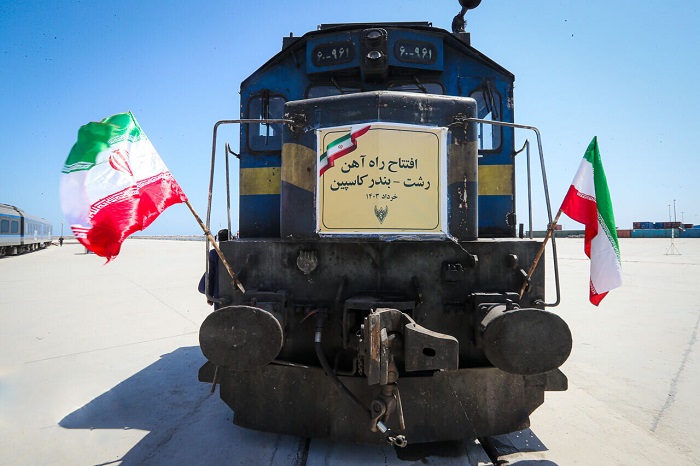 Iranian authorities have announced plans to commence the transit of sulfur from Turkmenistan via the recently inaugurated Rasht-Caspian Port railway. This new route, operational since 20 June, signifies a significant step forward in regional connectivity.
Iranian authorities have announced plans to commence the transit of sulfur from Turkmenistan via the recently inaugurated Rasht-Caspian Port railway. This new route, operational since 20 June, signifies a significant step forward in regional connectivity.
The 37-kilometer Rasht-Caspian railway connects the city of Rasht to the Caspian Sea port of Caspian in Enzeli. This section with a capacity of 7 million tons of cargo annually serves as the first stage of the larger Rasht-Astara route, which forms part of the strategic North-South International Transport Corridor.
Miad Salehi, Managing Director of Iran’s Railways (RAI), expressed optimism about the project’s potential to boost rail freight transit. “”With this connection, we anticipate a substantial increase in rail freight transit. Based on the agreements reached, we will commence transit of sulfur from Turkmenistan via this route starting next week. Sulfur will be transported from Turkmenbashi port to Caspian port and then through our country by rail,” he said, according to ISNA report.
Salehi further highlighted the significance of the Caspian Port route as the fourth established North-South corridor within Iran, strategically positioned amongst the six total corridors spanning the Caspian Sea region (two each in the east, center, and west).
Highlighting the advantages of this route, Salehi explained, “With its opening, we will be able to transport cargo from Russia that previously traveled via the Black Sea-Red Sea-Indian Ocean-India route. This will reduce the delivery time from around 50 days to less than 20 days, which is approximately one-third of the current time.”
The RAI managing director also emphasized the substantial cargo handling capacity associated with the Caspian port, currently estimated at 2.5 million tons. He expressed confidence that a significant portion of this cargo can be efficiently transported by rail. Furthermore, potential future expansion of the port’s capacity could see Iran handling up to 8 million tons of cargo on its territory. ///nCa, 1 July 2024